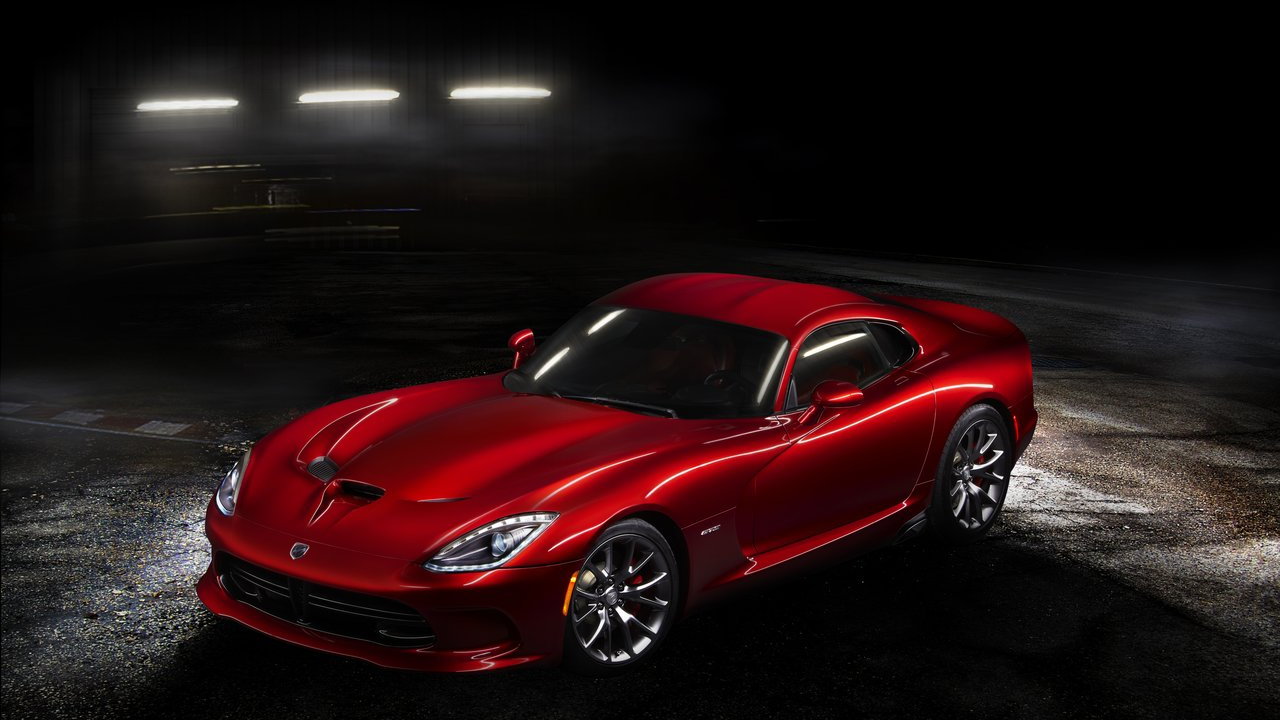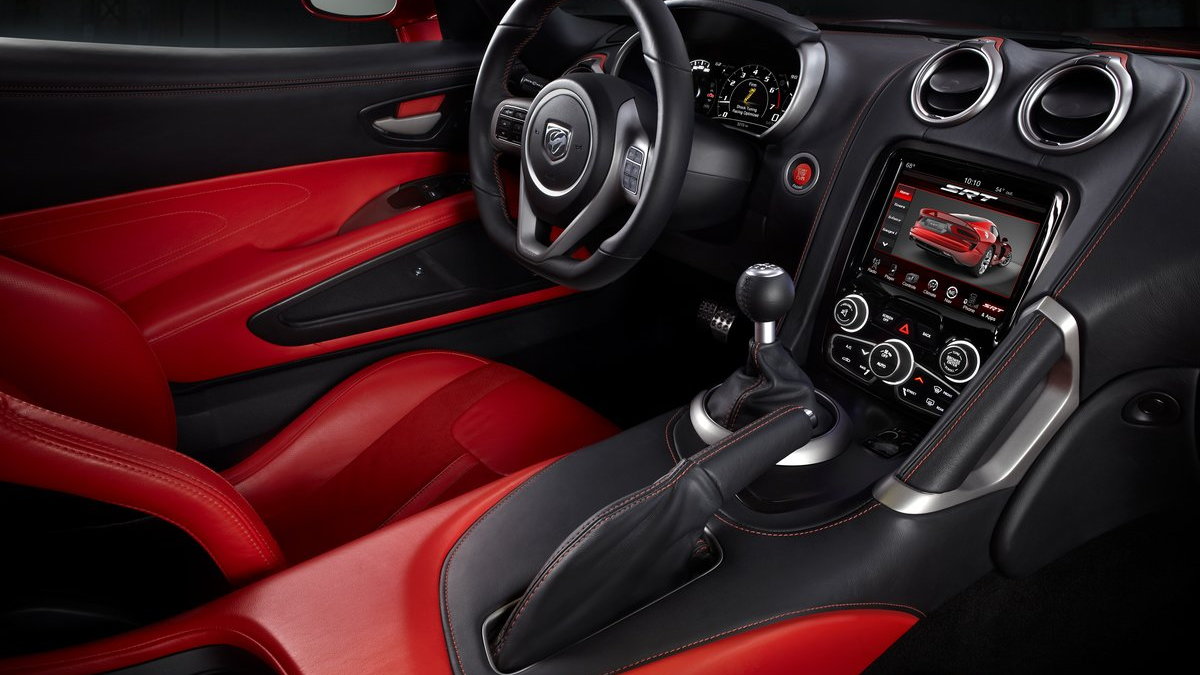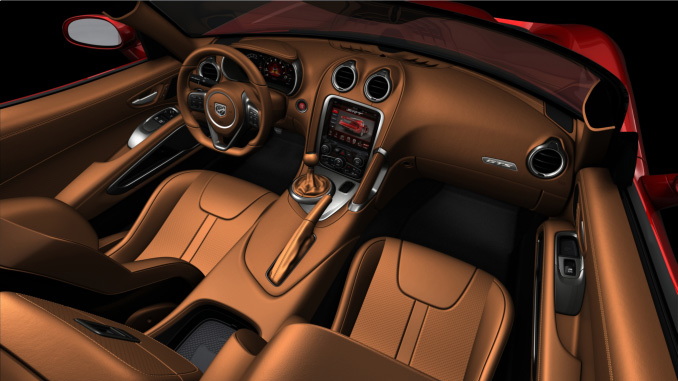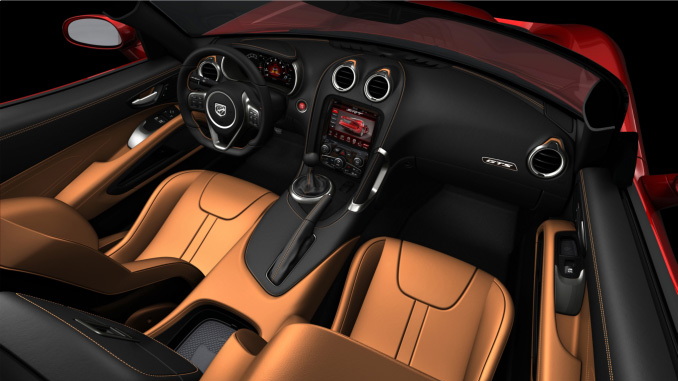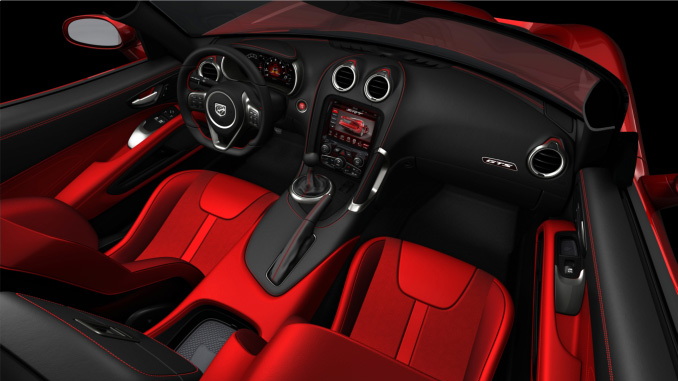As we found in our first drive of the 2013 Viper, SRT has managed to get rid of most of this sports-car icon's ragged edges in its second generation—without completely taming the beast. And the interior? Forget the old cockpit; now the Viper's cabin appointments alone are sexy—Italian-supercar sexy, really.
Credit Ferrari, and parent company Fiat. According to WardsAuto, key Viper team members spent time in Italy learning about hand-wrapped interiors and hand-stitched leather; and eventually SRT inked new contracts with suppliers (including Sabelt and International Automotive Components) to provide a far more high-end look—exemplified in the GTS, with its power seats, leather upholstery, and upgraded instrument panel with Uconnect media center.
Prior to the Viper's release, Henckel and other SRT executives anticipated that the GTS, with its sticker price that's about $23,000 higher (over the price of $97,395 for the base SRT Viper), would make up a small portion of overall Viper sales.
Buyers are also taking advantage of a strategy that involves far more customization that before, with colors, accessories, striping, wheels, and nearly 150,000 possible configurations in all.
And there's no reason why Ferrari and SRT would be competing, either. The affluent set won't ever choose between a Viper and an Italia, Henckel argues. They'll take them both.
Of course, we'll see if the GTS popularity sticks—after a year or two, after collector types and those very affluent customers land a GTS in their garage. Will we see sales of the base SRT Viper (or a race-oriented ACR) rise? Probably, but we also bet that SRT will keep sales stoked—and us all interested—with special-edition models and new packages.

2013 Dodge SRT Viper GTS
